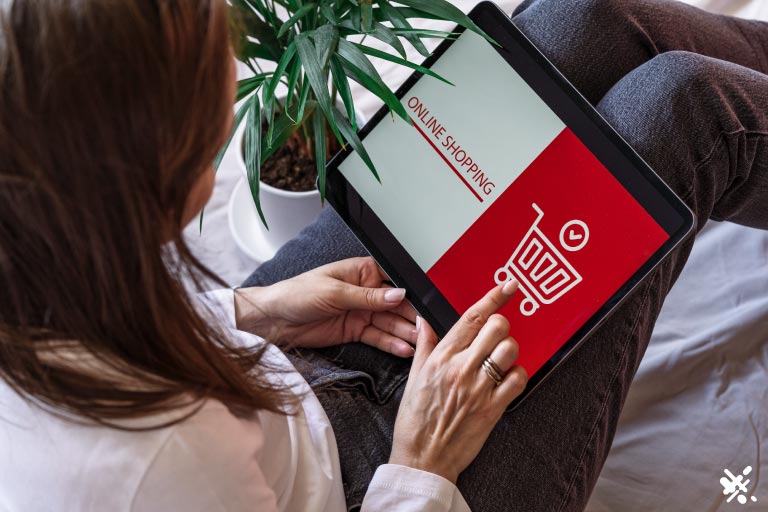Businesses with recurring billing integrations have always been strong performers. Setting up a predictable income stream month after month allows businesses to grow more steadily over time. Recurring billing also allows for better budgeting and forecasting, as the business knows exactly how much revenue they can expect each month.
Recently, there has been an explosion of new subscription-based and recurring e-commerce businesses. Many are subscription-box websites where customers pay a monthly fee and receive a new, curated box of items in a particular niche each month.
These have become wildly popular with entrepreneurs and customers. Of course, there are also traditional recurring business models that still do well today. These include gym memberships and other similar services.
But what all these different types of businesses have in common is the recurring billing model they use. That means they need tight integrations with their operational software to ensure the billing process operates smoothly.
They also need tools to ensure no pause in billing or other friction that consumers may experience, making them want to cancel.
Below, we’ll go over the core aspects of recurring billing integrations and the tools required to ensure you take advantage of this vital business model.

The Goal Of Recurring Billing Integration
The first step in understanding your recurring billing integration is to identify the goals involved. It’s not enough to accept payments. Instead, you want to have certain plans that help address the specific challenges of a recurring billing situation.
Identifying these goals early on helps you decide on the best integration partners and recurring billing solutions for your business.
Below, we’ll go over the most common goals that business owners should consider when integrating their recurring billing solution and automating payments.
Seamless Experience
A seamless experience means your customer should have the most seamless and continuous experience possible regarding their billing. So month after month, there is no need for the customer ever to intervene if they don’t want to.
Customers choose recurring billing businesses because they want to enjoy the service without interruption. Any disruption in billing detracts from that experience and expectation. It also opens a window where customers can choose not to continue paying.
The goal with your billing system software is to achieve the most seamless and continuous experience possible without customer intervention. The customer enters their payment information once, and they never have to worry about it again.
Payment Options
This goal also involves the customer experience, and it’s about giving them the most options and payment methods possible.
Credit cards and debit cards should be first on the list. But recurring businesses that operate a physical location, such as a gym, also want to be equipped with the latest payment hardware, such as terminals that accept Apple Pay or other mobile payments.
For e-commerce sites, you should be able to accept ACH or eCheck payments as well. These options work well for more extensive ticket services or services that recur annually and have a higher transaction amount.
Some customers prefer ACH for these payments, making their accounting easier than putting the charge on a credit card.
Having the most available options increases your chances of turning a potential customer into a recurring customer. These options lower your average cost to acquire a new customer, an essential metric in a recurring business model.
Easy Management And Control Of The Billing System
Many benefits may be negated if the billing system is unwieldy or difficult to manage. So your recurring billing platform and software must be easy to manage.
This includes things such as the management dashboard or merchant interface. It needs to be simple enough to make adjustments quickly. But it also needs to have the deep functionality required for specialized tasks.
Security
Security is a top concern when a business handles customer data and credit card information for online payments. Data breaches can be costly and even catastrophic for a business of any size.
Not only that, but to process credit cards, all businesses must follow PCI DSS (Payment Card Industry Data Security Standards) regulations and guidelines. So any integration or billing solution must be secure.
You’ll also want to determine which billing solutions have tools to help you with security concerns. Customer vaulting and other services help businesses mitigate risks when holding credit card information for recurring billing.
Reduce Failures And Involuntary Churn
One area of concern for all recurring billing-based businesses is the churn rate. Churn is when you lose a customer. Customers leaving over time is inevitable, so most Software as a service (SaaS) businesses constantly acquire new members.
However, involuntary churn is like throwing money out the window. This is when a customer happily paying has a billing issue that interrupts their service and payment collection on the due date. In these cases, the customer may not choose to fix the problem, and the business loses a customer for no reason.
Recurring billing solutions need tools to eliminate involuntary churn as much as possible. Including card updating tools and other services to ensure payments can continue uninterrupted in various circumstances.
Components Of Recurring Billing Integration
Recurring billing integration is about a synergistic payment solution that works with several key components to create a seamless experience for the customer.
Operational Software Of The Business
Operational software includes the software the business uses for its operations. This software can consist of off-the-shelf software if they are a small business— something like Quickbooks for accounting or invoice software.
It could also be a leased software program specific to their industry. For example, the fitness and wellness industries have software vendors that sell or lease software specifically for that industry.
The other option is a custom software application. Custom software applications are usually reserved for larger organizations since the cost of creating a customized software operation is generally not feasible for small businesses.
But whichever option you use, the payment solution needs to integrate with this software, and this is an area to confirm before making any commitments or signing any contracts.
A lot of this integration will come down to the API being used. The API or Application Program Interface is how different systems in your business interact with the payment gateway. We’ll explain more about the payment gateway later in this section.
Most payment gateway APIs integrate with existing popular software. But if you use a custom option or a non-standard software application to operate your business, you want to ensure compatibility.
Integrating these systems with your payment system lets you track analytics and critical metrics crucial for a recurring subscriptions-based business.
These include:
- Lifetime customer value
- Monthly recurring revenue
- Customer acquisition costs
- Annual recurring revenue
- Cash flow
- Sales
- Churn rate
- Total revenue
Without tight integration, many of these metrics will be harder to track as you’ll have to move data across different systems to combine it all in one location. Unintegrated data can be prone to errors and is also labor-intensive.

Website Platform And Shopping Cart
If the business is an e-commerce site, it will have a website or shopping platform, along with a specific shopping cart software.
Integrating your recurring billing solution with the shopping platform and shopping cart would be best. You can generally do this via the API of your payment gateway.
Although some shopping platforms have their own payment solutions, it’s best to avoid these if you are a serious business. These aggregate payment processors combine all merchants using the service into one large account.
This combination means you don’t own your own merchant account and are at the whim of the aggregate payment processor, such as Stripe or Paypal.
Serious businesses need reliable recurring payment processing options for their own merchant account through a payment processor such as ECS Payments. Individual merchant accounts provide complete flexibility and ownership of the entire payment processing workflow.
Merchant Account And Payment Processor
We already briefly touched on the need for a merchant account. This account allows you to process your customers’ credit cards, debit cards, and ACH payments.
You apply for these accounts through a payment processor. The payment processor will also grant you access to your payment gateway of choice.
Payment gateways are the network where the credit card information travels while it is being processed and authorized. The payment gateway is also a component of your merchant account. It is integrated with the rest of your systems listed above.
The choice of payment gateways is crucial for any business, especially with a recurring billing type business.
ECS Payments offers a choice between several payment gateways so merchants can choose which works best for their business needs.
If you’re unsure about which payment gateway or merchant account to use with your recurring billing business, contact ECS Payments. Our experts understand the subscription-based industry and can work with you to find the right recurring billing solution to help your business succeed.
Recurring Billing Software
Some businesses use an additional software application that specializes in recurring billing. These programs are like a shopping cart for an e-commerce business but focused on subscriptions instead of selling individual items for a one-time purchase.
Several of these applications have popped up in recent years with the popularity of recurring e-commerce business models.
These can be helpful for some businesses, and choosing one that fits your business’s needs is essential. However, these services add an additional cost, many of which are Software as a Service (SaaS). This means they have their own recurring subscription costs.
Recurring Billing Software Fees
Many popular options, like Maxio, start at $600 per month or more for the basic service. This fee includes their basic subscription functionality for up to $1 million in annual sales. Above that sales threshold, the monthly cost is well over $1k.
This cost is in addition to per-transaction fees, which are included for successful transactions, declines, and other outcomes.
Depending on your business model, these fees can make these services somewhat expensive. They do offer features that can be helpful such as a customer portal. Still, it’s essential to decide how important they are to you.
So for smaller businesses, there are other cost-effective options depending on their needs.
Recurring Billing Software Integration
Another consideration when using one of these services is that you want to integrate your merchant account with the service.
If you use their partner payment gateway or merchant account, this will make it very difficult for you to leave the service and bring your customers with you.
With your merchant account and payment gateway, moving to a different service will be much easier.
Since these services are subscription-based and you don’t own the software or service, you can lose access if you miss a payment or decide to stop paying.
Eventually, it’s essential to have your own merchant account for this to protect your business. That way, you can continue doing business with another service or use your own subscription management solution.

Types of Recurring Billing Situations
There are a few different billing situations that can be considered recurring, and it’s essential to know the difference between them. Also, some businesses, such as property owners, may not realize they can use a recurring billing model to help make their payment workflow much more manageable.
Recurring Credit Or Debit Card Payments
This is when customers enter their credit information and then agree to a specific billing cycle. The cycle can be monthly, quarterly, or annually.
The customer can generally cancel these at any time. However, the merchant may institute fees or penalties if the customer agreed to a specific term but canceled before that term was up.
This situation is common with SaaS products or software.
Recurring Direct Debit Payments
Recurring direct debit payments are when a customer enters their bank information, and the merchant takes funds from the account at regular intervals. These are less common with most subscription websites, but B2B recurring billing or installment payments can use them occasionally.
Recurring ACH payments
ACH or Automated Clearing House payments work like electronic or eChecks, which are good for larger transactions. One benefit for ACH is they will usually incur lower fees, especially for larger purchases or recurring billing.
ACH payments generally have an extra step during the purchase workflow. The bank information needs to be verified, which is usually done via instant bank verification or IBV. IBV is a seamless process for the customer using a third-party app. But it only involves one extra step, and most customers are already familiar with this payment workflow.
Usage-Based Recurring Payments
When people think of recurring billing, they usually think of a fixed monthly charge. This is the typical scenario, and it’s known as a fixed recurring payment. It is common with gyms, wellness centers, streaming services, or subscription box services.
However, many newer recurring billing business models base their costs on usage. This is popular with SaaS companies. This type of billing can charge a different amount per billing cycle based on use. This is a variable recurring payment.
For example, a SaaS company may offer a per-user monthly rate for access to their product. Meaning, the customer can add users to the software as needed, and the monthly recurring billing amount will change depending on the number of users added or reduced.
As a business, it’s essential to understand these different models and consider which one may work best for you. You’ll also need a flexible payment solution to make sure you can handle whichever model you choose.
Another thing to consider is a hybrid model that offers both fixed recurring billing and variable recurring billing. If handled properly, this can increase sales and revenue by giving customers more options, especially smaller customers who may want to try your product first with less risk.
Taking Advantage Of Your Existing Payment Gateway’s Features
There are many third-party services and apps to help with recurring billing, but as we’ve pointed out, these can be expensive, and you may not need them depending on your business.
If you have a merchant account through a payment processor such as ECS Payments, then you already have access to a top-tier payment gateway. Most gateways have a suite of recurring billing tools that you can use immediately.
For example, Authorize.net is one of the payment gateways to which ECS Payments offers access. Authorize.net is a great payment gateway for e-commerce businesses, especially those with recurring billing needs.
As a merchant, when you log into your Authorize.net gateway, you can access all the recurring billing tools needed right from that interface.
In this case, you will want to focus on two specific tools–the automatic recurring billing module (ARB) and the customer information manager (CIM).

Automatic Recurring Billing Module
You can create subscriptions from this dashboard by going to the ARB area and making the subscription. There are billing and invoicing options for the interval, such as monthly or annual. You can also offer free trials and other standard options with subscriptions.
Additionally, you can set up payment reminders here to alert customers of upcoming charges. You can also select from various invoice templates if you need to use invoicing for specific customers.
You can integrate this all directly with your website using the gateway’s API. To integrate the API, you must enter your API credentials into the software or shopping platform you use for your e-commerce website.
These credentials are created from the gateway’s dashboard within the API section. The gateway will make the credentials you enter into your website’s appropriate section.
Customer Information Manager
The other area that you may need for recurring billing is the customer information manager or CIM. This tool helps in two ways. For one, it stores your customers’ billing information for you. This means you can bill them regularly and have much less to worry about regarding security.
Since your payment gateway holds all the information on its servers, you have far fewer security concerns.
There’s an additional tool many gateways offer–an automatic card updater.
If you recall, we mentioned how involuntary churn due to failed billing is a problem with recurring subscriptions and can lower your revenue. Automatic card updating helps to combat this by checking the card information on file monthly. If the issuing bank of the customer’s card changes the expiration date or other information, your files are updated automatically.
This means that even if that customer received an updated credit card, you can continue to bill them uninterrupted. Uninterrupted payments dramatically reduce churn for a subscription business.
We singled out Authorize.net for many of these examples of useful tools that you have access to with your merchant account. But many gateways offer similar tools.
More Information About Recurring Billing Integration
If you need help setting up recurring billing for your business, contact ECS Payment and speak with one of our payment processing experts.
We offer merchants access to different gateways with tools built to help them manage their recurring billing and integrate them into their existing websites or operational software.
Contact ECS Payments today to learn more about recurring billing and how we can help you succeed using the latest innovative payment solutions.
